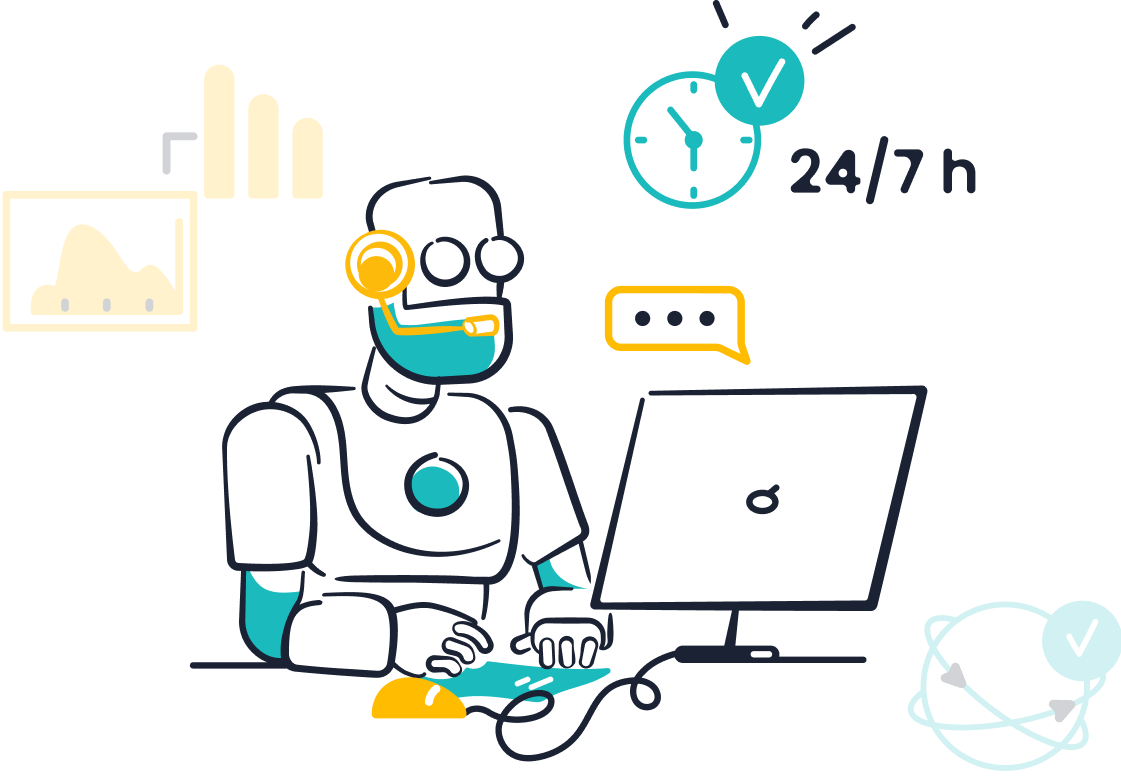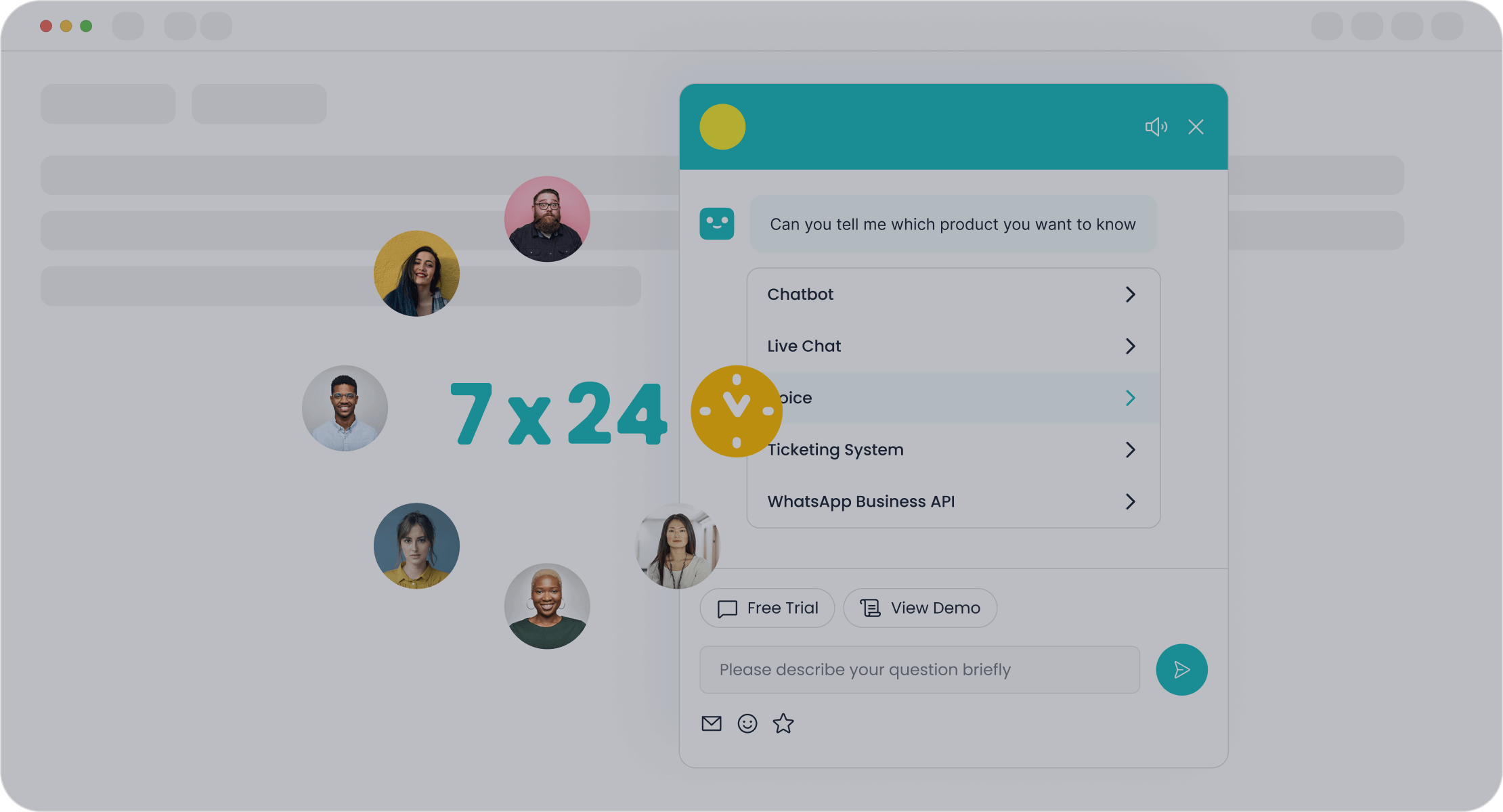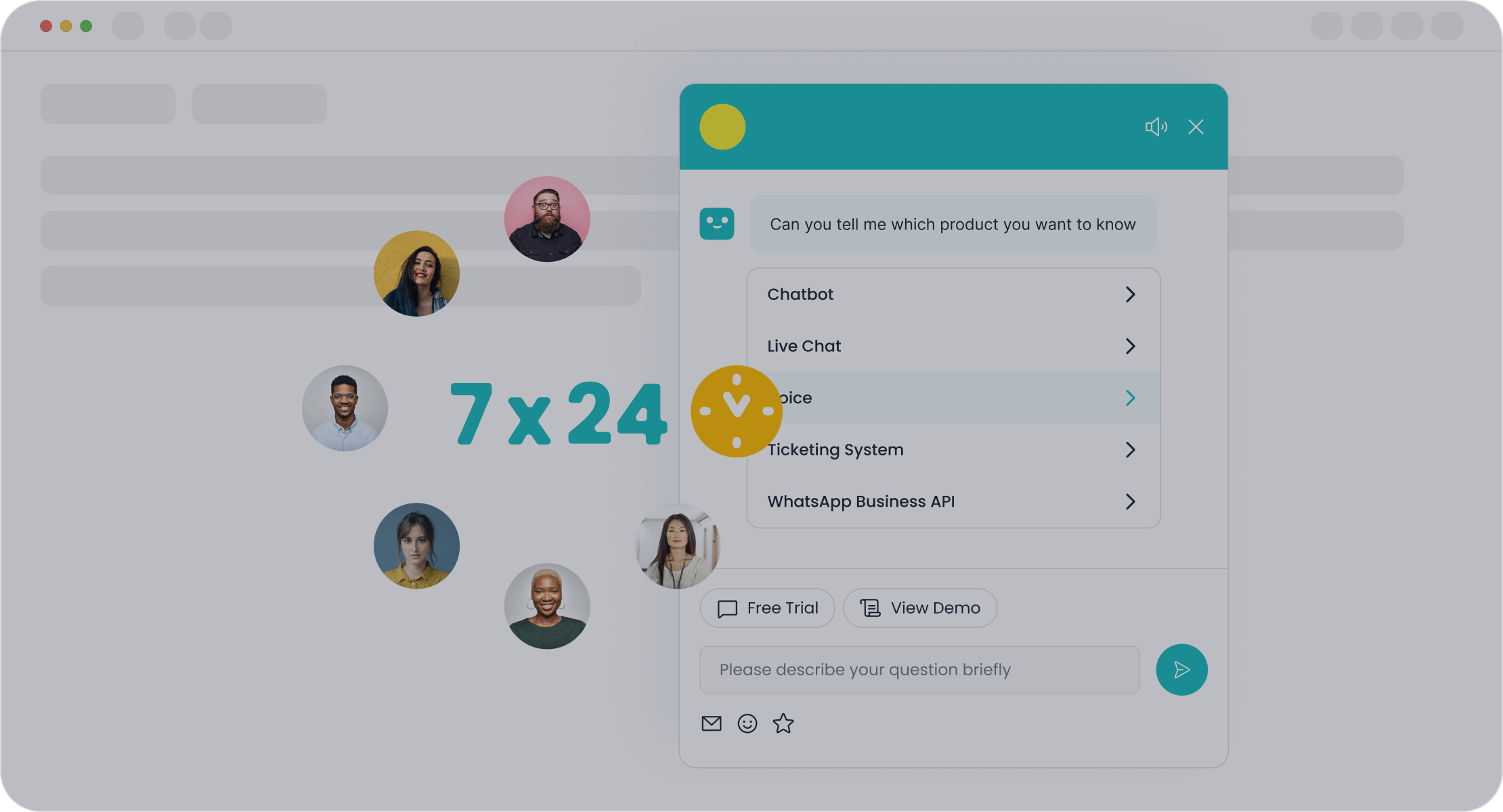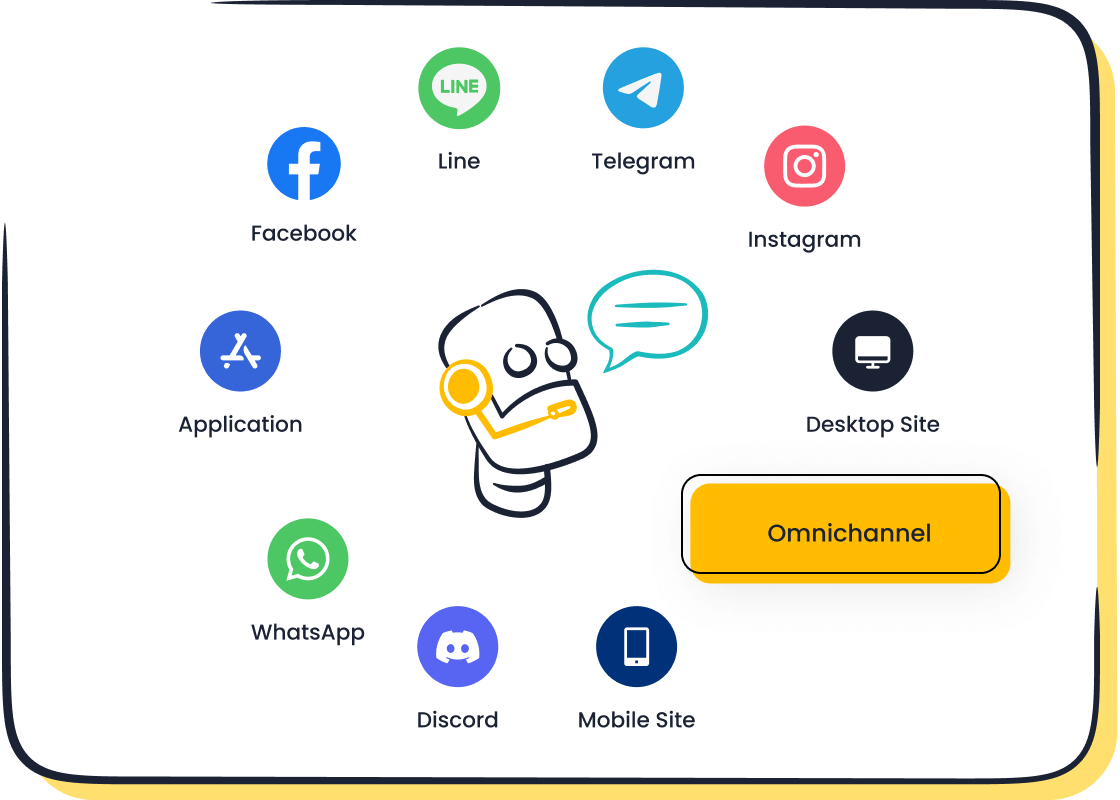Maximizing AI Efficiency in Customer Service with Smart Strategies

AI has revolutionized customer service by reshaping how businesses handle interactions. You can now experience faster responses and personalized solutions, thanks to AI-powered tools. A 2023 Gartner study reveals that 80% of companies use AI to enhance customer experience, while businesses adopting AI report a 37% reduction in first response times. These advancements highlight the importance of efficiency in AI-driven customer interactions. Tools like Sobot's AI Chatbot allow you to ask AI customer service questions and further optimize processes by resolving up to 30% of queries autonomously. By adopting smart strategies, you can unlock AI's full potential and elevate customer satisfaction with Sobot.
Understanding AI in Customer Service
What is AI in Customer Service?
Definition and key components of AI in customer service.

AI in customer service refers to the use of artificial intelligence technologies to enhance how businesses interact with their customers. These systems automate repetitive tasks, provide instant responses, and deliver personalized experiences. Key components include AI-powered chatbots, predictive analytics, and sentiment analysis tools. For example, Sobot's AI Chatbot operates 24/7, handling inquiries across multiple channels like WhatsApp and SMS. It uses a knowledge base to provide accurate answers, improving efficiency by 70% and cutting costs by up to 50%.
AI systems also offer multilingual support, ensuring you can communicate with customers in their preferred language. They analyze customer data to predict needs and provide tailored solutions. This combination of automation, scalability, and personalization makes AI a cornerstone of modern customer support.
Common AI tools, including Sobot's Chatbot, used in customer support.

AI tools in customer support include chatbots, virtual assistants, and analytics platforms. These tools streamline operations and improve customer satisfaction. Sobot's AI Chatbot stands out by offering omnichannel support and a no-coding-required setup. It autonomously resolves up to 30% of queries, allowing human agents to focus on complex issues. Additionally, it boosts conversions by 20% through proactive messaging and real-time assistance.
Other tools, like predictive analytics, help businesses anticipate customer needs. Sentiment analysis monitors emotions during interactions, enabling you to adjust responses for better outcomes. These technologies work together to create a seamless and efficient customer service experience.
Why AI is Essential for Modern Customer Service
The shift to digital-first customer interactions.
The rise of digital-first interactions has transformed customer service. Today, 90% of customers expect instant responses, and 61% prefer faster replies from AI. Businesses must adapt to meet these expectations. AI tools, like Sobot's Chatbot, ensure you can provide quick and accurate support across multiple platforms. They handle high volumes of inquiries during peak times without compromising quality.
A recent study shows that 80% of companies plan to adopt AI chatbots by 2025. This trend highlights the growing reliance on AI to manage customer interactions efficiently. By integrating AI, you can stay ahead in a competitive market and deliver exceptional service.
AI’s role in delivering personalized responses and meeting customer expectations.
AI excels at delivering personalized responses by analyzing customer data. For instance, predictive analytics identifies patterns in behavior, allowing you to offer tailored solutions. Sobot's Chatbot uses this approach to enhance engagement and loyalty. It provides real-time assistance based on customer intent, ensuring every interaction feels unique.
Personalization also improves satisfaction. A report reveals that 46% of users experience more personalized service through AI. By meeting these expectations, you can build stronger relationships with your customers. AI not only enhances efficiency but also creates meaningful connections that drive long-term success.
Benefits of AI in Customer Service
Scalability and 24/7 Availability
Handling high volumes of queries with AI.
AI systems excel at managing large volumes of customer inquiries, especially during peak times. Unlike human agents, AI solutions scale effortlessly to handle increased demand without compromising quality. For instance, Sobot's AI Chatbot autonomously resolves up to 30% of customer support queries, ensuring seamless interactions even during high-traffic periods. This scalability allows you to maintain exceptional customer experiences while reducing the strain on your team.
A recent study highlights that 36% of businesses value AI for its ability to provide 24/7 support, while 28% appreciate how it handles minor tasks, freeing agents for complex issues. By integrating AI, you can ensure uninterrupted service and meet customer expectations efficiently.
Reducing wait times and improving customer satisfaction.
AI-powered tools significantly reduce wait times by providing instant responses. Sobot's Chatbot, for example, operates round-the-clock, ensuring customers receive timely assistance. This capability not only enhances customer satisfaction but also improves engagement by addressing issues promptly.
Statistics reveal that 55% of businesses report decreased wait times with AI, and 37% experience a drop in first response times. By adopting AI, you can deliver faster resolutions and create exceptional customer experiences that foster loyalty.
Personalization and Data-Driven Insights
Creating tailored, personalized responses with AI.
AI enables you to deliver personalized service by analyzing customer data and preferences. Tools like Sobot's Chatbot use predictive analytics to craft responses that resonate with individual needs. This approach enhances engagement and ensures every interaction feels meaningful.
A report shows that 64% of businesses using AI note increased personalization in customer interactions. By leveraging AI, you can provide tailored solutions that improve customer satisfaction and build stronger relationships.
Leveraging predictive analytics for proactive customer support.
Predictive analytics empowers you to anticipate customer needs and offer proactive support. Sobot's AI solutions analyze historical data to identify patterns, enabling you to address potential issues before they arise. This proactive approach not only improves customer experience but also boosts operational efficiency.
Research indicates that 84% of executives believe AI simplifies ticket responses, while 91% see its value in enhancing customer engagement. By utilizing predictive analytics, you can stay ahead of customer expectations and deliver exceptional customer experiences.
Cost Efficiency and Resource Optimization
Automating repetitive tasks to reduce operational costs.
AI automates routine tasks, allowing you to cut costs and allocate resources more effectively. Sobot's Chatbot, for instance, triages queries autonomously, saving up to 50% on additional agent costs. This automation streamlines workflows and reduces the need for extensive staffing during peak seasons.
According to McKinsey, AI adoption leads to a 35% reduction in customer service costs. By automating repetitive tasks, you can achieve significant savings while maintaining high-quality service.
Freeing up human agents for complex customer issues.
AI handles basic inquiries, freeing your human agents to focus on more complex problems. This collaboration improves the quality of customer support and ensures faster resolutions for challenging cases. Sobot's Chatbot exemplifies this by seamlessly transitioning queries to agents when needed.
Data shows that 28% of businesses find AI valuable for managing minor duties, while 94% report increased productivity among customer service specialists. By integrating AI, you can optimize your resources and enhance customer satisfaction.

Actionable Strategies to Maximize AI Efficiency

Deploying AI Chatbots for Instant Support
Best practices for implementing Sobot's Chatbot.

To maximize the efficiency of AI chatbots, you should follow proven best practices. Start by disclosing that customers are interacting with AI. Transparency builds trust and sets clear expectations. Understand common customer queries and optimize workflows to ensure the chatbot addresses frequent issues effectively. Sobot's AI Chatbot, for example, uses a knowledge base to provide accurate responses across multiple channels. Use clear language and offer response options to guide users seamlessly through interactions.
Personalization is another key factor. By incorporating customer data, Sobot's Chatbot delivers tailored responses that enhance customer satisfaction. Continuous training ensures the chatbot adapts to changing customer needs. Studies show that 68% of users value the quickness of chatbot responses, and 61% prefer faster replies from AI over waiting for human agents. These practices ensure real-time responsiveness and improve customer engagement.
Ensuring seamless transitions between chatbots and human agents.
AI chatbots excel at handling routine queries, but some issues require human intervention. To maintain responsiveness, ensure a smooth handoff between the chatbot and human agents. Sobot's Chatbot achieves this by escalating complex queries directly to agents, providing them with the context needed to resolve issues quickly. This collaboration reduces wait times and enhances customer support.
Metrics like response time and customer satisfaction scores highlight the importance of seamless transitions. Faster resolutions lead to higher satisfaction, while effective collaboration between AI and agents boosts operational efficiency. By implementing these strategies, you can create a balanced system that combines the strengths of AI and human expertise.
Leveraging Predictive Analytics for AI-Powered CX Strategies
Anticipating customer needs with data insights.
Predictive analytics empowers you to anticipate customer needs by analyzing historical data. For example, Sobot's AI solutions identify patterns in customer behavior, enabling proactive support. Businesses like CAA Club Group have used predictive models to forecast call volumes, reducing forecast generation time by 30%. This approach optimizes resource allocation and ensures real-time responsiveness.
By leveraging predictive analytics, you can uncover customer insights that drive personalizing customer experiences. Data trends reveal preferences and pain points, allowing you to address issues before they escalate. This proactive strategy not only improves customer satisfaction but also strengthens loyalty.
Enhancing decision-making with AI-driven analytics.
AI-powered CX strategies rely on data-driven decisions to improve customer service outcomes. Predictive analytics provides actionable insights, helping you make informed choices. For instance, TGH Urgent Care implemented AI-driven solutions to increase call answer rates to 80% while reducing incoming call volume by 40%. These results demonstrate how analytics enhance decision-making and operational efficiency.
By identifying patterns and trends, you can refine your strategies to meet customer expectations. Analytics also improve customer lifetime value by fostering retention and boosting revenue. This data-driven approach ensures your customer support remains efficient and impactful.
Utilizing Sentiment Analysis for Customer Satisfaction
Monitoring customer emotions in real-time.
Real-time sentiment analysis allows you to gauge customer emotions during interactions. Tools like Sobot's AI solutions analyze feedback instantly, enabling you to adjust responses for better outcomes. For example, T-Mobile used sentiment analysis to reduce client complaints by 73%. This demonstrates how understanding emotions can enhance customer satisfaction.
AI enhances sentiment analysis by processing large volumes of data quickly and accurately. This capability provides a comprehensive view of customer sentiment across channels. By monitoring emotions in real-time, you can deliver personalized support that meets customer expectations.
Adjusting responses to improve customer experience.
Sentiment analysis helps you adapt responses to align with customer emotions. Metrics like Net Promoter Scores (NPS) and Customer Satisfaction Scores (CSAT) reflect the effectiveness of these adjustments. For instance, Sobot's Chatbot uses sentiment analysis to tailor interactions, ensuring a positive experience.
Retaining satisfied customers is more cost-effective than acquiring new ones. By leveraging sentiment analysis, you can boost customer loyalty and improve overall service quality. This strategy not only enhances responsiveness but also strengthens your brand reputation.
Automating Routine Tasks with AI
Examples of tasks automated by AI, including Sobot's solutions.

AI excels at automating repetitive tasks, enabling you to focus on more strategic aspects of customer service. Tasks like answering FAQs, processing refunds, and managing ticket assignments can now be handled seamlessly by AI tools. For instance, Sobot's AI Chatbot autonomously resolves up to 30% of customer queries, reducing the workload for human agents. It also operates 24/7, ensuring uninterrupted support for your customers.
Automation not only improves efficiency but also minimizes errors in processes like data entry and calculations. Businesses that integrate AI report significant gains, including a 37% drop in first response times and a 52% increase in ticket resolution speed. These improvements translate into better customer experiences and operational savings.
| Metric | Value |
|---|---|
| Reduction in first response times | 37% drop |
| Ticket resolution speed | 52% faster |
| Cost reduction in customer service | 35% reduction |
| Revenue increase | 32% increase |

By automating repetitive tasks, you can streamline operations and enhance productivity. Sobot's solutions, such as its Chatbot, help you automate workflows effectively, ensuring your team can focus on complex customer interactions.
Streamlining workflows to enhance efficiency.
AI-driven automation simplifies workflows, making your customer service operations more efficient. Sobot's Chatbot integrates seamlessly with various platforms, enabling you to unify customer interactions across channels like WhatsApp and SMS. This integration eliminates data silos and ensures a consistent experience for your customers.
Automation also reduces the time required to complete routine tasks. For example, AI tools can automatically categorize and prioritize tickets, ensuring faster resolutions. By automating these processes, you can improve response times and reduce operational costs. Businesses that adopt AI to automate workflows often see a 35% reduction in customer service costs and a 32% increase in revenue. These results highlight the transformative impact of automation on customer service efficiency.
Continuous Training and Optimization of AI Systems
Regular updates to AI algorithms for improved performance.
AI systems require continuous updates to stay effective. Regular algorithm updates ensure your AI tools adapt to changing customer needs and behaviors. For example, Sobot's AI Chatbot uses real-time insights to refine its responses, improving accuracy and relevance. This adaptability enhances customer satisfaction and ensures your AI remains a valuable asset.
Continuous training also allows AI to learn from new data, making it more efficient over time. Businesses that invest in regular updates often experience better retention rates and improved service quality. By keeping your AI systems up-to-date, you can maintain a competitive edge in customer service.
Monitoring and refining AI processes based on feedback.
Monitoring AI performance is essential for optimizing its effectiveness. Real-time feedback helps you identify areas for improvement, ensuring your AI tools deliver consistent results. For instance, Sobot's solutions analyze customer interactions to refine their processes, enhancing both speed and accuracy.
Refining AI systems based on feedback also improves customer experiences. Personalized service, driven by AI insights, leads to higher satisfaction and loyalty. By continuously monitoring and optimizing your AI tools, you can ensure they meet your customers' evolving expectations.
Key Considerations for Implementing AI in Customer Service
Ensuring Data Security and Privacy
Protecting customer data in AI systems.
AI systems handle vast amounts of sensitive customer data, making security a top priority. You should implement robust encryption protocols to protect information during storage and transmission. Regular audits can help identify vulnerabilities and ensure compliance with security standards. For example, Sobot's AI solutions prioritize data protection by adhering to industry best practices, ensuring customer trust remains intact.
A clear AI policy also helps safeguard data. This policy should outline how data is collected, stored, and used. By taking these steps, you can minimize risks and maintain the integrity of your customer service operations.
Compliance with global data protection regulations.
Adhering to regulations like GDPR and CCPA is essential when implementing AI in customer service. These laws require transparency in data usage and give customers control over their information. Non-compliance can lead to hefty fines and damage your reputation.
To ensure compliance, you should establish clear guidelines for data handling. Regular training for your team can also help them stay updated on regulatory changes. Sobot's AI tools, for instance, are designed to meet global data protection standards, making them a reliable choice for secure customer interactions.
Integrating AI with Existing Systems
Compatibility with CRM tools and other platforms.
Seamless integration with existing CRM systems is crucial for effective AI implementation. Before selecting an AI solution, verify its compatibility with your current tools. For example, Sobot's AI Chatbot integrates effortlessly with popular CRM platforms, ensuring smooth workflows and accurate responses.
You should also prioritize data quality. Clean and organized data improves AI performance and ensures accurate insights. Regular updates to your data systems can further enhance compatibility and efficiency.
Avoiding disruptions during the implementation process.
AI integration can disrupt operations if not managed carefully. To avoid this, start with a pilot program focusing on specific use cases. Gradually expand successful implementations while monitoring performance. This approach minimizes downtime and ensures a smooth transition.
Clear communication with your team is also vital. Training sessions can help employees understand how to use AI tools effectively. By addressing potential challenges early, you can ensure a seamless integration process that enhances your customer service capabilities.
Measuring and Monitoring AI Performance
Key metrics to track AI efficiency and success.
Tracking performance metrics helps you evaluate the effectiveness of your AI systems. Key indicators include customer satisfaction, task success rate, and auto-resolution rate. For example, Sobot's AI Chatbot achieves a high auto-resolution rate, reducing the need for human intervention and improving efficiency.
| KPI | Description |
|---|---|
| Customer satisfaction | Measures improvements in customer experience post-AI implementation. |
| Task success rate | Percentage of successfully completed tasks by users. |
| Auto-resolution rate | Percentage of inquiries resolved automatically by AI. |
| Time savings | Reduction in time needed to complete tasks after AI implementation. |
By monitoring these metrics, you can identify areas for improvement and refine your strategies.
Adjusting strategies based on performance data.
Performance data provides valuable insights for optimizing your AI systems. Regularly analyze metrics like customer effort score and latency to identify pain points. For instance, if response times are high, you can adjust your AI algorithms to improve speed.
Feedback loops also play a critical role. Encourage customers and employees to share their experiences with AI tools. This input helps you make informed decisions and ensures your AI systems continue to meet evolving needs. By refining your strategies, you can maximize the impact of AI on your customer service operations.
Real-World Examples of AI in Customer Service

Case Studies Featuring Sobot's Solutions

How OPPO achieved an 83% chatbot resolution rate with Sobot
OPPO, a global leader in smart devices, faced challenges during peak shopping periods when customer inquiries surged. By implementing Sobot's AI Chatbot, OPPO automated responses to repetitive questions, allowing human agents to focus on complex issues. This collaboration improved efficiency and reduced wait times. Sobot also optimized OPPO's knowledge base, cutting maintenance efforts by 90%. The results were remarkable: an 83% chatbot resolution rate, a 94% positive feedback rate, and a 57% increase in repurchase rates. These achievements highlight how Sobot's solutions enhance customer service and streamline operations.
Lessons from other leading companies using Sobot's Chatbot
Sobot's Chatbot has delivered measurable success across industries. For example:
- A company reduced inbound discussion volume by 20% and achieved a 96%+ positive feedback rate.
- Another business autonomously resolved 22.2% of customer questions, earning a CSAT score of 97%.
- One organization solved 85% of problems with a 99% customer satisfaction rate.
These examples demonstrate how Sobot's Chatbot improves response times, boosts satisfaction, and enhances customer interactions.
Key Takeaways from Successful Implementations
Best practices for maximizing AI efficiency
To maximize AI efficiency, you should:
- Define clear objectives, such as reducing response times or improving satisfaction.
- Choose tools like Sobot's Chatbot that align with your needs.
- Integrate AI with existing systems for seamless workflows.
- Continuously train AI with diverse data to improve accuracy.
- Focus on user experience by designing intuitive interactions.
These practices ensure your AI tools deliver consistent and impactful results.
Common challenges and how to overcome them
AI implementation can face challenges like data integration and user adoption. To overcome these, start with a pilot program to test AI in specific areas. Train your team to use AI tools effectively and provide human support for complex issues. Regularly monitor performance metrics, such as resolution rates and customer satisfaction, to refine your strategies. By addressing these challenges, you can unlock the full potential of AI in customer service.
AI has transformed customer service by delivering faster, more accurate, and personalized support. It handles high volumes of inquiries, reduces wait times, and enhances customer satisfaction. Predictive analytics and real-time sentiment analysis allow you to anticipate customer needs and adapt responses, ensuring empathetic interactions. Studies show that 84% of executives use AI for client interactions, while 88% believe automation boosts loyalty. These advancements highlight the importance of adopting smart strategies to maximize AI efficiency.
By leveraging solutions like Sobot's AI Chatbot, you can streamline operations and focus on enhancing customer interactions. Its ability to operate 24/7, provide multilingual support, and integrate seamlessly with existing systems makes it an invaluable tool. Embrace AI to elevate your customer service and build lasting relationships.
FAQ
What is the main purpose of AI in customer service?
AI in customer service automates repetitive tasks, provides instant responses, and personalizes interactions. Tools like Sobot's AI Chatbot handle common queries, allowing human agents to focus on complex issues. This improves efficiency, reduces costs, and enhances customer satisfaction.
How does AI improve customer interactions?
AI analyzes data to deliver personalized responses and anticipate customer needs. For example, Sobot's Chatbot uses predictive analytics to craft tailored solutions. This creates meaningful interactions, builds loyalty, and ensures customers feel valued.
Can AI operate across multiple channels?
Yes, AI tools like Sobot's Chatbot offer omnichannel support. They handle inquiries on platforms such as WhatsApp, SMS, and websites. This ensures consistent and seamless interactions, regardless of the customer's preferred communication channel.
Is AI suitable for businesses of all sizes?
AI solutions, including Sobot's Chatbot, cater to businesses of all sizes. They scale to meet the needs of small startups and large enterprises. This flexibility makes AI a valuable tool for improving customer service across industries.
How does AI ensure data security?
AI systems prioritize data security through encryption and compliance with regulations like GDPR. Sobot's solutions follow industry best practices to protect customer information, ensuring trust and reliability in every interaction.
See Also
Enhancing Efficiency With AI-Driven Customer Service Solutions
Best 10 AI Technologies for Enterprise Call Centers
Evaluating AI Solutions for Enterprise Call Centers
